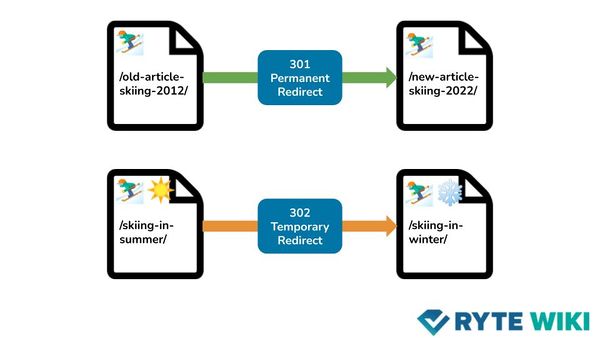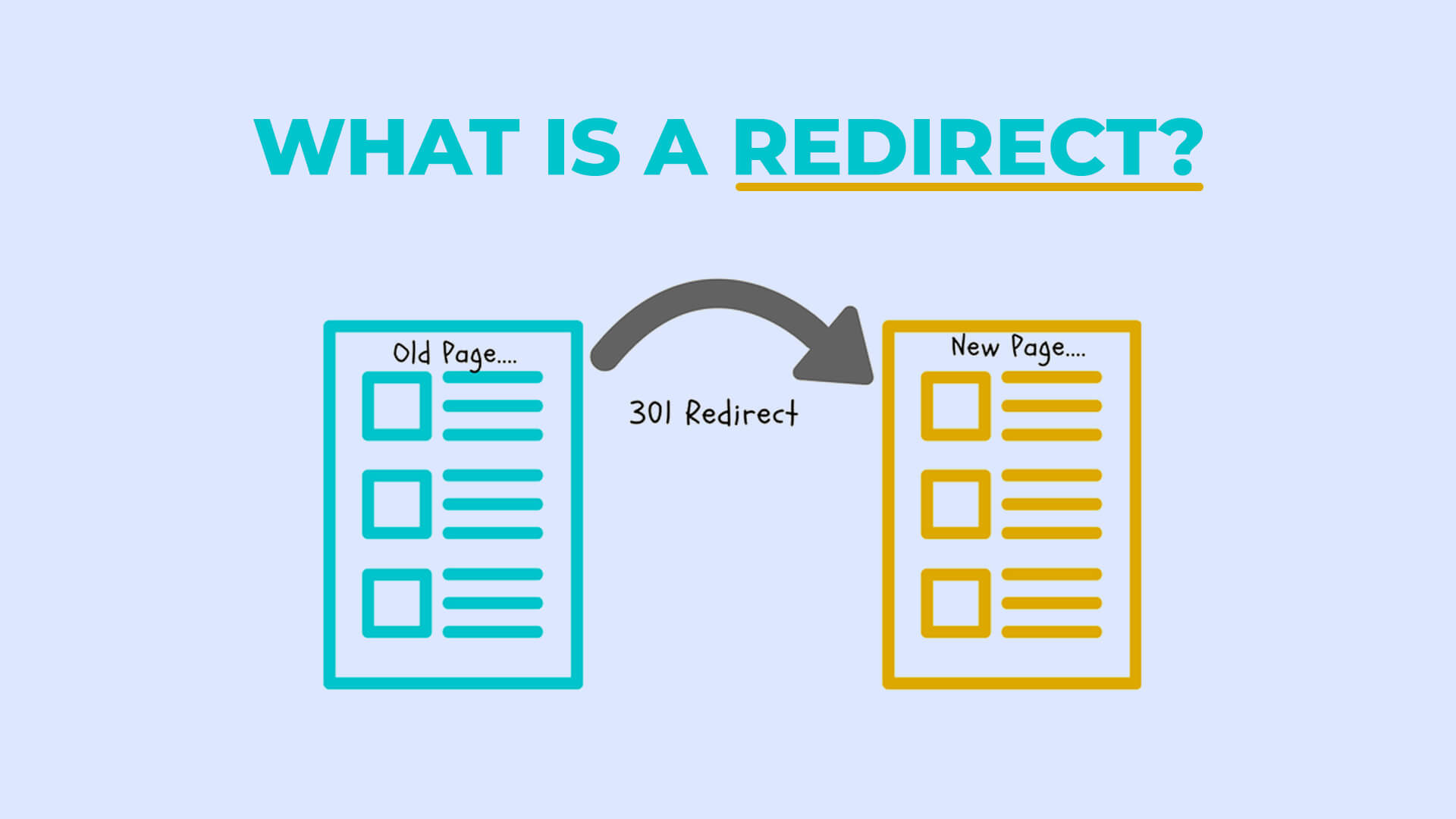Have you ever clicked a link and landed somewhere unexpected? That’s the power of redirects.
They guide your visitors smoothly from one page to another without confusion. But if not set up right, redirects can hurt your website’s performance and search rankings. You’ll discover what redirects are, why they matter for your site, and how to use them the smart way.
Keep reading to unlock simple tips that can improve your user experience and boost your online presence.
Types Of Redirects
Redirects help guide visitors and search engines to the right webpage. They play a key role in website management and SEO. Different redirects serve different purposes. Understanding each type helps maintain site health and user experience.
301 Permanent Redirects
301 redirects tell browsers and search engines a page has moved permanently. They pass most link authority to the new URL. Use 301 redirects when you change a page’s address for good. This helps keep your rankings and traffic intact.
302 Temporary Redirects
302 redirects indicate a page move is temporary. Browsers keep the original URL in their index. Use 302 redirects for short-term changes or testing. They do not pass full SEO value to the new page.
Meta Refresh Redirects
Meta refresh redirects use HTML code to refresh a page after a delay. They often appear as a message like “If not redirected, click here.” These redirects are slower and less SEO-friendly. Avoid using them for important redirects.

Credit: en.ryte.com
Seo Benefits Of Redirects
Redirects play a key role in SEO by guiding users and search engines smoothly. They help keep website value intact during changes. Using redirects correctly improves site ranking and user experience.
Preserving Link Equity
Redirects pass link equity from old URLs to new ones. This means the value gained from backlinks is not lost. It helps maintain the site’s authority and ranking power. Without redirects, link equity disappears, hurting SEO performance.
Avoiding Duplicate Content
Redirects prevent duplicate content issues by consolidating URLs. Search engines see one main version instead of multiple copies. This stops ranking problems caused by content duplication. Redirects keep your site clean and focused for search engines.
Enhancing Crawl Efficiency
Redirects guide search engines to the correct pages quickly. They reduce wasted crawl budget on outdated or broken URLs. This helps search engines index your site better and faster. Efficient crawling improves overall SEO health and visibility.
User Experience Improvements
User experience improves greatly with well-implemented redirects. They guide visitors smoothly across your site. Proper redirects prevent confusion and frustration. They keep users engaged and happy. Good redirect strategies ensure visitors find what they need fast.
Seamless Navigation
Redirects help users move between pages without interruptions. Visitors do not see error messages or dead ends. Instead, they land directly on the right page. This creates a smooth browsing experience. Clear navigation encourages visitors to stay longer on your site.
Reducing Broken Links
Broken links harm user trust and hurt your SEO. Redirects fix broken URLs by pointing to updated pages. This avoids annoying “404 Not Found” errors. Users can access content even if the link changes. It keeps your site reliable and user-friendly.
Mobile-friendly Redirects
Mobile users expect fast, simple browsing on small screens. Redirects can send mobile visitors to optimized pages. These pages load quicker and display better on phones. Mobile-friendly redirects improve user satisfaction on all devices. They make your site accessible to a wider audience.

Credit: www.semrush.com
Common Redirect Mistakes
Redirects help guide visitors to the right page on your website. They keep your site running smoothly and protect your SEO rankings. Many people make simple mistakes with redirects that cause big problems. These errors can slow down your site or confuse search engines. Knowing common redirect mistakes helps you fix them fast.
Redirect Chains And Loops
Redirect chains happen when one redirect points to another, and then another. This makes the browser follow many steps before reaching the final page. Chains slow down your site speed and waste server resources.
Redirect loops occur when redirects point back to themselves. This creates an endless cycle that stops the page from loading. Browsers usually show an error in this case. Both chains and loops hurt user experience and SEO rankings.
Using Incorrect Redirect Types
There are two main redirect types: 301 and 302. A 301 redirect tells search engines the page moved permanently. A 302 means the move is temporary. Using the wrong type confuses search engines.
For permanent changes, always use 301 redirects. Using 302 for permanent moves can cause loss of SEO value. Choose the correct redirect type to keep your rankings strong.
Ignoring Redirect Updates
Websites change often. URLs may change or pages get deleted. Ignoring redirect updates leads to broken links or outdated redirects.
Check redirects regularly. Update or remove those that no longer make sense. This keeps your site healthy and easy to use.
Implementing Smart Redirect Strategies
Implementing smart redirect strategies helps keep your website healthy and user-friendly. Redirects guide visitors and search engines to the right pages. They prevent broken links and protect your SEO rankings. A clear plan and regular checks make redirects work well.
Planning Redirect Maps
Create a redirect map before making changes. List old URLs and their new destinations. Group similar pages for easier management. This plan helps avoid mistakes and loops. It saves time during updates and migrations.
Monitoring Redirect Performance
Check how redirects affect your site regularly. Use tools to track redirect speed and errors. Fix broken or slow redirects quickly. Watch for redirect chains and loops that hurt SEO. Monitoring keeps your site smooth and user-friendly.
Using Redirects In Site Migrations
Redirects are crucial during site migrations. They send visitors from old pages to new ones. This keeps traffic flowing and search rankings stable. Test redirects fully before launching the new site. Proper redirects avoid lost visitors and SEO drops.

Credit: www.sitecentre.com.au
Tools For Managing Redirects
Managing redirects is vital for maintaining a healthy website. They help keep visitors on the right pages and protect your SEO rankings. Using the right tools makes redirect management easier and more effective.
These tools check if redirects work correctly. They find broken links and help fix issues fast. They also ensure that your website stays user-friendly and search-engine-friendly.
Redirect Testing Tools
Redirect testing tools check if URLs lead to the right pages. They show the path a redirect takes and reveal any errors. Tools like HTTP Status Code Checker or Redirect Path help spot redirect loops and broken links.
These tools save time by quickly confirming redirects work. They help prevent bad user experiences and lost traffic.
Seo Audit Software
SEO audit software scans your whole website for redirect problems. It finds broken redirects and identifies redirect chains that slow down your site. Programs like Screaming Frog and Ahrefs help keep your SEO strong.
Such software also tracks page authority and crawl issues caused by redirects. It provides reports to fix problems and improve site health.
Server Configuration Utilities
Server configuration utilities allow direct control over redirects on your server. Tools like cPanel or .htaccess editors help set up or edit redirects easily. They support 301, 302, and other redirect types.
These utilities give you full control over how redirects behave. Proper setup helps avoid mistakes that hurt SEO and user experience.
Frequently Asked Questions
What Is A Redirect In Web Development?
A redirect sends users and search engines from one URL to another. It helps manage changed or removed pages efficiently. Redirects maintain user experience and SEO value by guiding traffic correctly.
How Do 301 Redirects Affect Seo Ranking?
301 redirects permanently transfer SEO value from the old URL to the new one. They preserve link equity and prevent ranking loss. Using 301 redirects correctly helps maintain search engine rankings during URL changes.
What Are Common Types Of Redirects?
The most common types are 301 (permanent), 302 (temporary), and meta refresh redirects. Each serves different purposes in URL management and user navigation. Choosing the right type is essential for SEO and user experience.
When Should I Use A 302 Redirect Instead Of 301?
Use a 302 redirect for temporary URL changes when you plan to restore the original page. It signals search engines not to transfer SEO value permanently. This helps avoid ranking issues during short-term changes.
Conclusion
Redirects help users find the right web pages quickly. They also keep search engines happy by passing link value. Using the correct type of redirect avoids confusion and errors. Test your redirects to ensure they work well every time. Clear and simple redirects improve website experience and SEO.
Keep your site organized with smart redirect choices. This small step supports better traffic and user trust.

